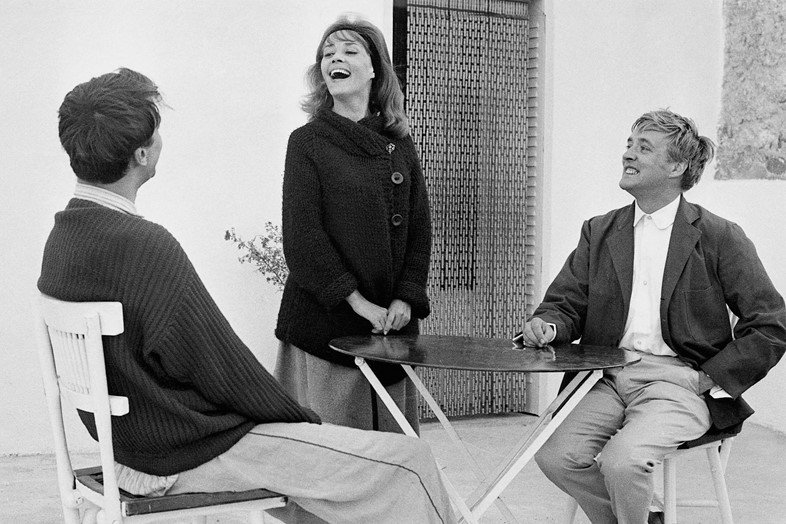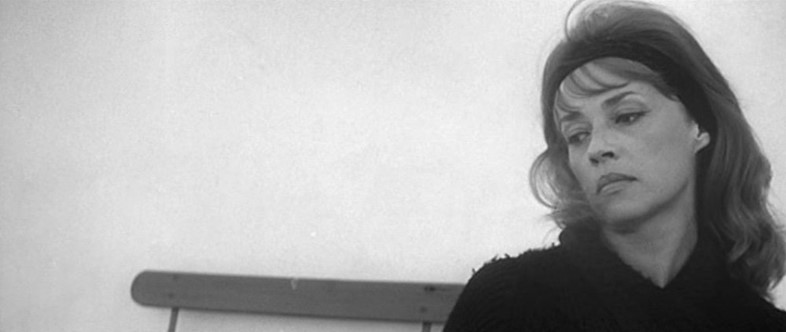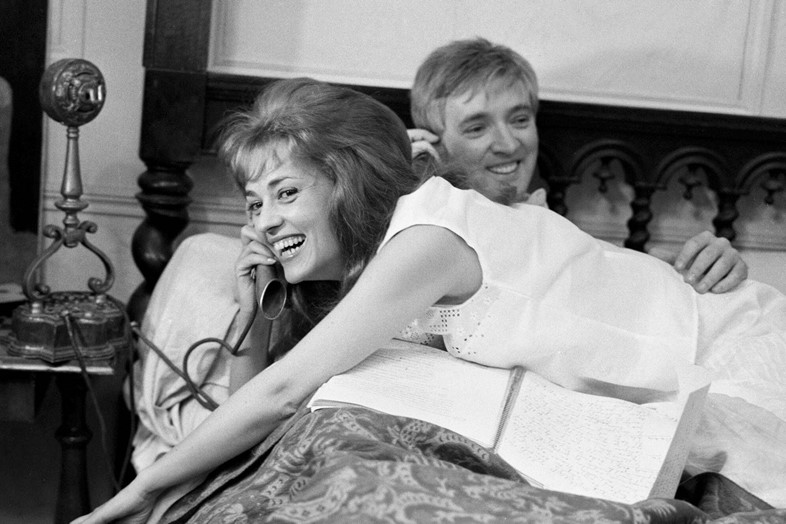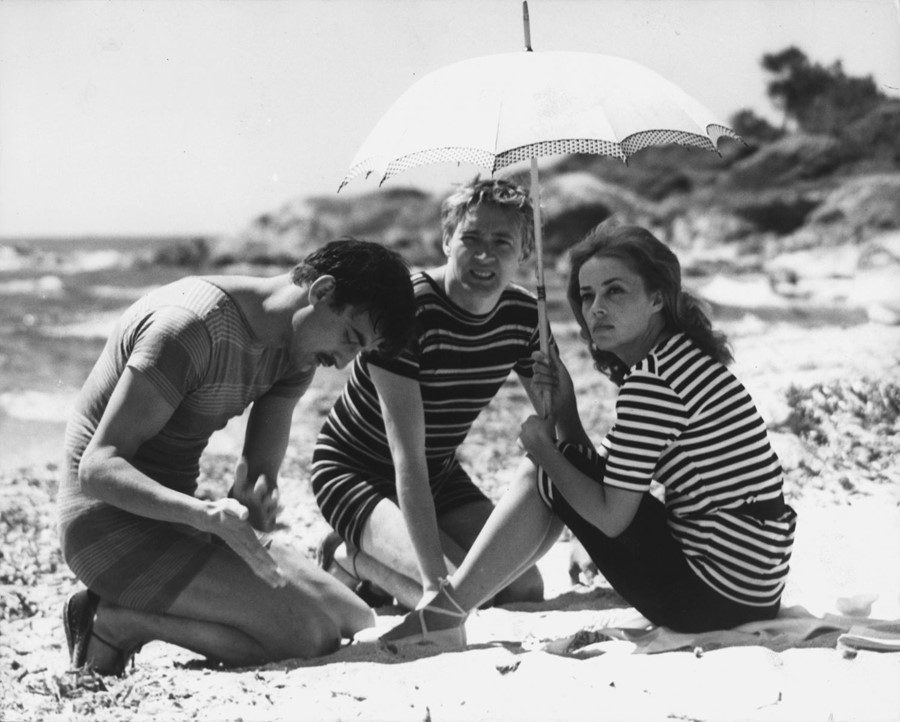In the wake of the fêted French actress’ death, we remember her iconic turn as Catherine in Truffaut’s Jules et Jim
In 1962, lauded French auteur François Truffaut unleashed one of cinema’s most brilliant love triangles upon the world with his black and white masterpiece Jules et Jim. It is the story of a shy Austrian named Jules (Oskar Werner) and a dashing Frenchman called Jim (Henri Serre), who meet in belle époque Paris and bond over a shared love of literature, an indifference to money and an interest in beautiful ladies. One day, the friends see a photograph of an ancient statue of a goddess with a serene smile and make a pilgrimage to the Adriatic island on which it stands. There they declare that if they ever meet a woman with the same smile, they’ll follow her to the ends of the earth.

Cue: Jeanne Moreau as the beguiling and capricious Catherine, whose pale-lipped grin and unbridled passion captures their hearts. So begins a 25-year journey, punctuated by Jules’ marriage to Catherine, the onset of war, and both men’s struggle to keep her satisfied. Upon the film’s release, Moreau’s character was hailed as a feminist icon; she is, to quote Jim, “an apparition on this earth, not a woman for a man” and lives and loves exactly as she pleases. Moreau, who once declared that “physical beauty is a disgrace”, found in Catherine, and the experimental manner of New Wave filmmaking, an excuse to challenge the notion of how women should look on-screen. “I saw it as the chance of a lifetime to escape the ‘star’ style,” she said in an interview with Film Comment. “All of a sudden we were filming in the street with very little make-up [and] costumes you found yourself. No one was telling me anymore, ‘You have circles under your eyes, your face is lopsided’ – suddenly it was life.” Here, in the wake of the actress’s recent death, we remember what is arguably her finest role, and the costumes that helped bring it to light.

The Signature Style
Much like the character herself, Catherine’s clothes take many forms throughout the film. For the scenes prior to the First World War, her costumes chiefly comprise a variety of long, high-waisted skirts, with ruffled, high-necked blouses à la a young Chanel. When we first encounter her, at a dinner organised by Jules, she is the picture of femininity in such an outfit, accompanied by a veiled straw hat and pointed, leather boots. The next time we see her, however, she promptly abandons her dress for baggy pinstriped trousers and a tattered fisherman’s sweater, donning a chequered newsboy cap, flat boots and pencilled-on moustache and racing out into Paris with Jules and Jim, in the guise of their “pal” Thomas. A similar transformation occurs during the gang’s epicurean trip to the French seaside, where Catherine swaps her frills for a striped breton top, black swimming shorts and wrap-around espadrilles – the picture of tomboy chic. She is, we discover, a skilled chameleon who is keen to enjoy the freedoms, sartorial and social, usually afforded to men.

Indeed, after a theatre outing in the film’s first half, she talks approvingly of the play’s “free” female protagonist. The men, however, are unconvinced and Jules begins rambling at length about male supremacy, leading Catherine to jump, in protest and with reckless abandon, into the Seine. She is retrieved but her veiled hat (a symbol of demureness?) drifts away. After the war, Catherine and Jules relocate to Germany to raise their young daughter. From this point onwards, the progressively dissatisfied Catherine wears pleated skirts or a low-waisted white flapper dress, topped by a variety of thick woolly jumpers and cardigans in soft hues or marinière stripes. She sports kohl eye-liner in upward flicks, and a black headband above her blunt fringe. Her preference for white clothing, the colour of purity, extends to her much-featured silk pyjamas and serves to support Jules’ sentiment that “she lives each moment with lucidity and harmony, guided by her feeling of innocence”. It is this singular brand of self-assurance that makes Catherine so alluring, but it is also the cause of her increasingly manipulative behaviour towards her devoted lovers, and its tragic consequences.

The Modern Manifestation
There are many ways to channel Catherine’s blend of carefree femininity and boyish charm today, beginning with a strong black kohl pencil, breton top and oversized men’s jumper. The pre-A/W17 Alexander McQueen collection boasts an array of long, bias-cut skirts and high-neck blouses, perfect for injecting some belle époque romance into your wardrobe. While Acne Studios offers a pair of pinstripe wool trousers with a gathered waist, which, paired with a loose-knit sweater (Spanish brand Babaà has a covetable selection), is ideal for city romps. Le Kilt is our destination of choice for a timeless take on the pleated skirt so favoured by Catherine – opt for a classic check in homage to her iconic flat cap – while Marques Almeida’s asymmetric knitwear conjures a contemporary iteration of our tumultuous heroine’s woolly jacket, memorably featured on Christian Broutin’s brilliant poster for the film.
